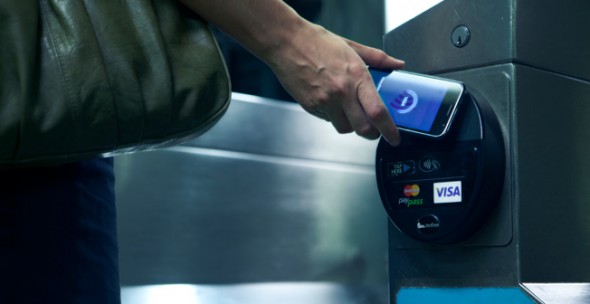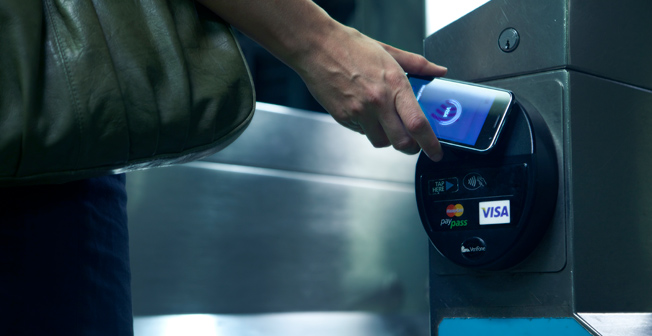
The mobile payment revolution is nearly upon us. Since the introduction of NFC payment functionality a few years ago, mobile payment stations have started to appear in brick-and-mortar stores all across the country, from boutique Brooklyn coffee shops to national chains like Home Depot and Starbucks. And according to some experts, the use of this technology will increase exponentially in the very near future. For instance, a study by Javelin Strategy predicts that mobile payments will jump from claiming a 0.1% share of total retail point-of-sale volume to a whopping 13% by 2018 – which amounts to roughly $5 billion in sales.
What this means to consumers like you and I is that the way we shop is about to change dramatically. The era of retail shopping as we know it will be over, and in its place will be a landscape in which purchasing something at a store is simpler, faster and more convenient than ever before. For example, here are just a few of the changes expected to be heralded in by the new age of retail shopping.
1. No More Queues at the Register
Not only will mobile payments speed up the line at the register – they have the potential to eliminate the register queue altogether. For instance, Wal-Mart is testing a new system called Scan & Go which allows shoppers to scan their purchases on their iPhone as they place them in the cart.
Rather than waiting for a self-checkout station to clear, you can simply wave your phone in front of a payment station on your way out of the store and your entire purchase will be transacted automatically. If the system is a success, it should make Wal-Mart’s in-store experience much more efficient.
2. More Bricks-and-Mortar Boutiques
Many new boutique shops choose to operate exclusively online these days – and for good reason. The internet gives retailers access to a wider customer base without requiring them to pay rent or to license a POS system. However, mobile payments can make brick-and-mortar locations much more viable for small businesses.
By adopting a virtual terminal such as WePay, retailers are able to accept payments anytime, anywhere from their tablet or smart phone. Those same stores can then use geo-targeted mobile ads or coupons to attract local customers. This makes a physical store more cost efficient for retailers and more attractive to consumers. As a result you should expect to see more boutiques and niche vendors leaving the comfort and security of their Etsy page to set up real, physical shops at arts festivals, street markets and other locations.
3. Wallet? What Wallet?
With the advent of Google Wallet and other payment apps, you might soon find your traditional wallet obsolete. Once mobile payments become widely used, there won’t be any point in lugging around a bunch of credit, debit and membership cards when you can just sync those accounts to an NFC-enabled phone.
Sure, you might keep your wallet with you as a vessel for your driver’s license and other forms of ID, but even those might go digital in the near future. Considering that your phone can already double as a plane ticket and proof of car insurance, it’s not a completely unlikely scenario.
4. You’re Going to Pay More for Security
Every revolution has its collaterals, and in the case of mobile payments the big issue is security. It’s no secret that mobile financial data can be exploited by hackers or thieves. If mobile payments are to become a permanent fixture at retail, then manufacturers and store owners will need to invest a lot of money into keeping your data safe while you shop.
Consequently, you might see the price of phones increase as developers stuff increasingly advanced security technology into them or you might see a rise in sticker prices at your local Wal-Mart as the store attempts to recoup the purchase of an on-site data security system. It’s not exactly clear at this moment how the security issue of NFC payments will be addressed, but if history serves then it’s safe to say that consumers will end up paying for it one way or another.
As Dylan famously sang, “the times, they are a changin’.” Though it took a while for mobile payments to establish a foothold in retail, it’s no question that phone transactions are now here to stay. So get ready, because once mobile payments start growing as they’re predicted to, the way we shop for everything from groceries to televisions is going to change drastically.

